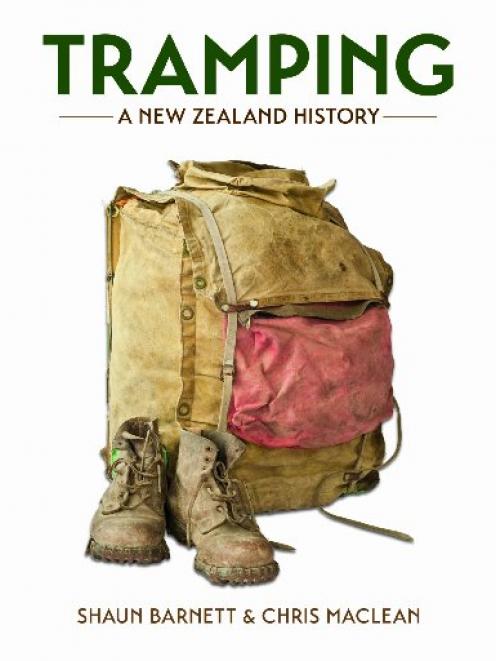
So it's surprising there's never been a book documenting its history.
It's been worth the wait. The track records of authors Shaun Barnett (Shelter from the Storm) and Chris Maclean (Tararua) augured well for an impressive and comprehensive history, and they have not disappointed.
The authors begin by contemplating the ''tramping experience'', considering the challenges and rewards and describing ''a subculture with its own traditions, literature and even language''.
The book recognises that walking around remote areas evolved from necessity to curiosity before becoming a recreational pursuit in its own right. It covers travel by Maori and early European pioneers, and considers that some of the earliest recreational tramping was as an extension of these journeys.
The book takes 117 pages before arriving at the landmark in formalising tramping as a recreational pursuit, the 1919 formation of Wellington's Tararua Tramping Club. The work of trampers, clubs and their national body, Federated Mountain Clubs, in advocating for the development of facilities and preservation of the places trampers love is extensively covered.
The social context of New Zealand is used to frame the history. We see, for example, how returning soldiers' need to reconnect with simpler times and places led to an explosion of tramping and hut-building after World War 2.
Sidebars cover a wide range of topics such as river crossing, gear, and ''love and loss in the hills''. Each chapter also focuses on a trip, track or journey, ranging from the Routeburn Track to Jack Holloway's remarkable exploratory journeys to the Olivine area in South Westland.
The book is beautifully illustrated. Shaun Barnett's images predominate, and are augmented by images from a wide range of contemporary photographers and historic sources.
It's clear extensive research has been undertaken - 46 pages are given over to references and a bibliography - and this is reflected in the breadth of the coverage, well-illustrated with anecdotes and quotes.
Despite this, it is a very readable book, not a dry history, and one that will surely come to be regarded as the definitive work on its topic.
- David Barnes is an avid tramper.











